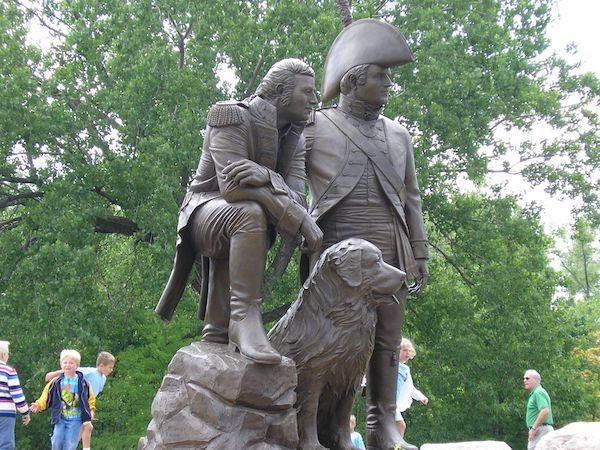
In 1803 under the threat of war, Thomas Jefferson and James Monroe successfully negotiated a deal with France to purchase the Louisiana Territory, some 827,000 square miles of land. A year later, however, the land beyond the Mississippi was still a mystery. There were fanciful legends about these regions that no white Americans had ever seen, and Thomas Jefferson was a curious man. Curiosity, however, was not the only reason Jefferson wanted this area explored: He wanted to stand in the way of any European country with notions of colonizing the western frontier of America.
Jefferson tasked his Secretary, Meriwether Lewis, to lead an expedition with the task of finding passage to the Pacific Ocean thinking the Missouri River would take them there. Lewis, in turn, chose his friend, William Clark, to go along.
Their 8,000 mile exploration was a military operation that lasted over two years. Thirty-three people made the trip and they had with them plotting instruments, maps and charts, thermometers and a microscope, sealing wax, writing paper, and ink powder, and more.
They had one more asset, a $20 dog named “Seaman.” The role played by the Newfoundland purchased by Lewis before the voyage was hidden in obscurity until the complete journals of the expeditions were published under the editorship of Reuben Gold Thwaites in 1904-05. Only then did the dog came to light as an acknowledged member of the Corps of Discovery. Only then did it became clear how often Seaman had proved his worth.
There are many statues and monuments of Seaman erected throughout the United States, and the larger-than-life one seen here sits along the Missouri riverfront in Frontier Park in Saint Charles, Missouri. Imagined by citizens in 1993, the monument cost $490,000 and took one year for artist Pat Kennedy to complete. It was dedicated on May 18, 2003, one year prior to the Expedition’s 200th anniversary.
For these citizens, it was personal.
When Clark and his men left Camp River Dubois on May 14, 1804 and went up the Missouri River, Lewis was still in St. Louis attending to last minute business. Clark arrived in St. Charles two days later. The Expedition then set out from St. Charles to resume their historic venture.
